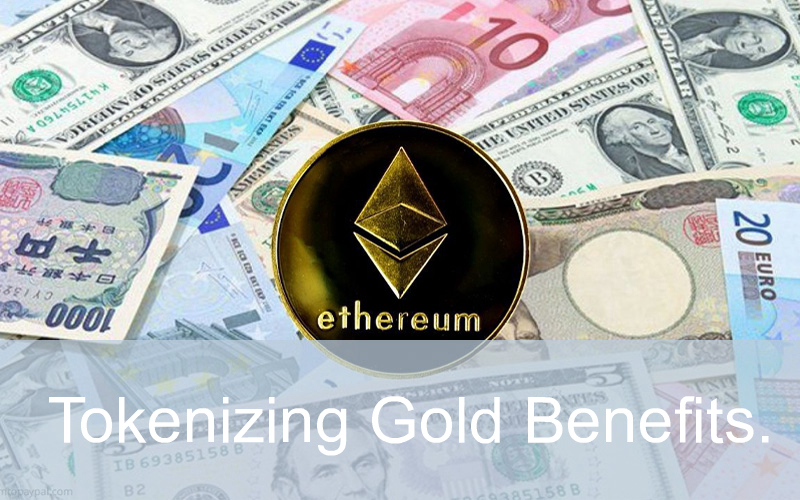The tokenization of real-world assets has been gaining a lot of attention lately, with investments having surpassed $1 billion in value last month alone. Tokenization involves putting ownership of tangible assets, such as precious metals, on the blockchain. This allows 24/7 access to buying and selling these assets, without the need of traditional brokers. Bank of America (BAC) sees the tokenization of real world assets - from commodities, currencies to equities - as a key driver for the adoption of digital assets.
Prior to tokenization, investing in gold was limited to a few investment vehicles; Exchange-Traded Funds (ETFs), futures, and physical gold purchases from dealers. All of which, are hampered by high costs, low liquidity and a lack of access for general investors. Tokenization of gold offers a much more convenient solution. Digital gold assets can be bought and sold in real-time, at a lower cost and with a lower minimum investment. Fractionalization of gold ownership was not possible before tokenization, however, thanks to blockchain technology, the transfer of physical gold ownership and value is now enabled.
Besides increased liquidity options and higher accessibilty, there are other advantages to tokenizing gold. It could potentially benefit EnvironmentSocialGovernance (ESG) focused investors, who are able to verify whether the gold is from a specific mine or region. Furthermore, the tokenization of the gold supply chain could enable more efficient and quick portfolio rebalancing.
These innovative changes to the gold market hint at the many benefits that could stem from the tokenization of other real-world assets. As tokenization becomes more pervasive, we can expect even more potential avenues for digital asset adoption as well.
 Robert Ward
Robert Ward
- 2023-04-14
The Tokenization of Real-World Assets
The tokenization of real-world assets, such as gold, provides digital assets with increased liquidity and enhanced accessibility. Bank of America sees tokenization of assets, from commodities, currencies to equities, as a key driver in the adoption of digital assets.

